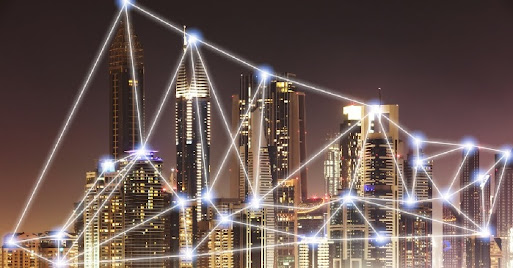Saudi University published study on Smart Flood detection solution using AI, Blockchain and drones to save lives
Saudi Imam
Abdulrahman Bin Faisal University department of computer Science and Saudi
Aramco Cybersecurity chair, published
in MDPI a study for a solution for Smart Flood Detection to save lives using the integration
of AI (Artificial Intelligence), Blockchain and drones.
According to the
study, floods pose a serious risk and require immediate management and
strategies for optimal response times. The Saudi city of Mecca has been
impacted by climate change in the last decade as floods have increased despite
the city’s location in the Arabian Gulf, which has a hot and wet climate.
According to the General Authority for Statistics in Mecca, since 2010, the
average peak rainfall has increased by 350%. Mecca experienced torrential rains
on 23 December 2022, at least partly because of its location, surrounded by
mountains, causing numerous vehicles to be swept away.
The authors
propose a secure method of flood detection in Saudi Arabia using a Flood
Detection Secure System (FDSS) based on deep active learning (DeepAL) based
classification model in federated learning to minimize communication costs and
maximize global learning accuracy.
As per their
abstract, “We use blockchain-based federated learning and partially homomorphic
encryption (PHE) for privacy protection and stochastic gradient descent (SGD)
to share optimal solutions. Utilizing images and IoT data, FDSS can train local
models that detect and monitor floods. The proposed FDSS enabled us to estimate
the flooded areas and track the rapid changes in dam water levels to gauge the
flood threat. This study concludes with a discussion of the proposed method and
its challenges in managing floods in remote regions using artificial
intelligence and blockchain technology.
The study introduces
a drone application that uses blockchain to manage flooding in remote regions
safely and in real-time. The framework can be helpful in missions based on both
blockchain and IPFS. The proposed architecture of system nodes makes the
process more secure by preventing information from being manipulated and
enhancing the data analysis capability within the management system. In a blockchain
network, the text data is recorded as part of the transaction information that
is recorded during transactions. In addition, a visualization platform will
allow access to transaction data, making it easier for operators to supervise
their operations.
The study offers
a scheme that improves the FL system performance by using DeepAL to select the
optimal edge nodes and integrating the learned model parameters into a
blockchain-based FL scheme to enhance the reliability and security of the FL
system. This method is combined with modern cryptography techniques, such as
homomorphic encryption, to achieve a high level of privacy and security
capabilities.
In natural
disasters, UAVs’ real-time data acquisition can prevent harm by controlling
operations efficiently. They can be used to obtain aerial photographs and read
water levels, wind speeds, and water speeds to predict weather events, prevent
disasters, and aid rescues. These complex interactions can be achieved using
AI, the computer-based system that executes tasks requiring intelligence.
With AI and
machine learning, systems will be able to resist new, sophisticated attacks
with shifting characteristics. Drones must be built with a collective
machine-learning model integrating all data from IoT devices and webcams that
can be sent to the MEC to create an algorithm with strong predictive
capability.
The proposed
framework assumes that UAVs collect data and MEC servers store it in the
blockchain. This includes basic data, such as the device name, MAC address and
type, and geographic data, such as latitude and longitude that help MEC servers
acquire data. Before data is added to the blockchain, MEC servers verify UAV
validity.
The study
utilizes the Internet of Drones (IoD) which can help to save many lives during
floods and other catastrophic weather events in places that are difficult for
people to reach. IoT devices can be used to collect data on the location and
status of people in the affected areas, such as their vital signs, to
prioritize rescue efforts.
The data will be
sent to a central server where deep-learning algorithms will be used to analyze
the data and create a rescue plan. The plan will be sent to relevant
organizations involved in the rescue efforts, allowing them to provide aid
quickly and efficiently to those in need.
In conclusion
the study believes that the system has the potential to significantly improve
the efficiency and effectiveness of rescue efforts in disaster situations. By
utilizing AI, blockchain, and IoT technologies, the system can quickly analyze
large amounts of data and provide a comprehensive rescue plan, ultimately
saving more lives.


If you would like to support LaraontheBlock blog and are happy with the content being published you can do so by donating USDT. Thank you!
ReplyDeleteUSDT (ERC20) on the below wallet address:
0x78d6F0a4F22A5D2c7B4e25FEE5fe3a8c1A863820